We Are Here Now
2010-2012
︎︎︎ Project Website
︎︎︎ Beijing Project Website
Project Lead
Sarah Williams
Project Manager
Juan Francisco Saldarriaga
Research Associates
Georgia Bullen
Francis Tan
Noa Younse
Bryan Valentini
Researcher Assistants
Fatima Abdul-Nabi
Adare Blumenfeld
Caitlin Hackett
Jen So Godzeno
Alex McQuilkin
Tiffany Rattray
Carlos Salazar Echavarría
Fred Sham
Nathan Tinclair
Ben Golder (Beijing)
Liqun Chen (Beijing)
Support from
The Rockefeller Foundation
︎︎︎ Project Website
︎︎︎ Beijing Project Website
Project Lead
Sarah Williams
Project Manager
Juan Francisco Saldarriaga
Research Associates
Georgia Bullen
Francis Tan
Noa Younse
Bryan Valentini
Researcher Assistants
Fatima Abdul-Nabi
Adare Blumenfeld
Caitlin Hackett
Jen So Godzeno
Alex McQuilkin
Tiffany Rattray
Carlos Salazar Echavarría
Fred Sham
Nathan Tinclair
Ben Golder (Beijing)
Liqun Chen (Beijing)
Support from
The Rockefeller Foundation
Overview
Social media is increasingly becoming part of our everyday lives, from connecting with friends and sharing images to exploring cities through loca- tion-based applications. These new services have given us a different vantage point from which to understand, explore, navigate, and geographically
record the places we live.
Social media app users register far more than what they are doing; they also show what they are feeling. Users reveal when and where they are going through an emotional crisis, experiencing their own personal heaven or hell, an “apocalyptic” event, or simply having a good time. Overlaying this data with more traditional government data sets exposed the economic patterns inherent in the way these applications are used. For example the majority of “check in” data comes from areas in the city that have the highest ratios of commercial use.

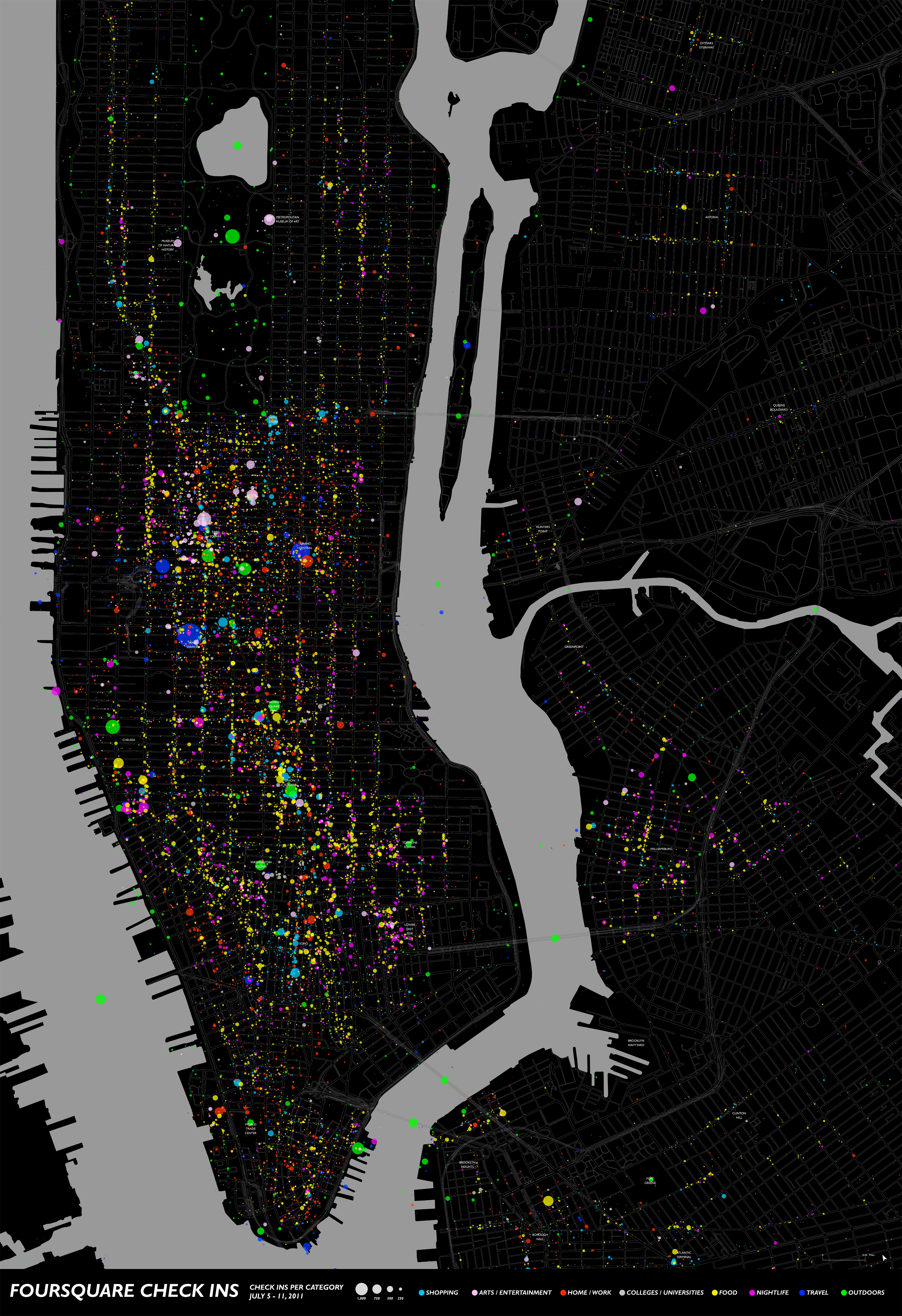
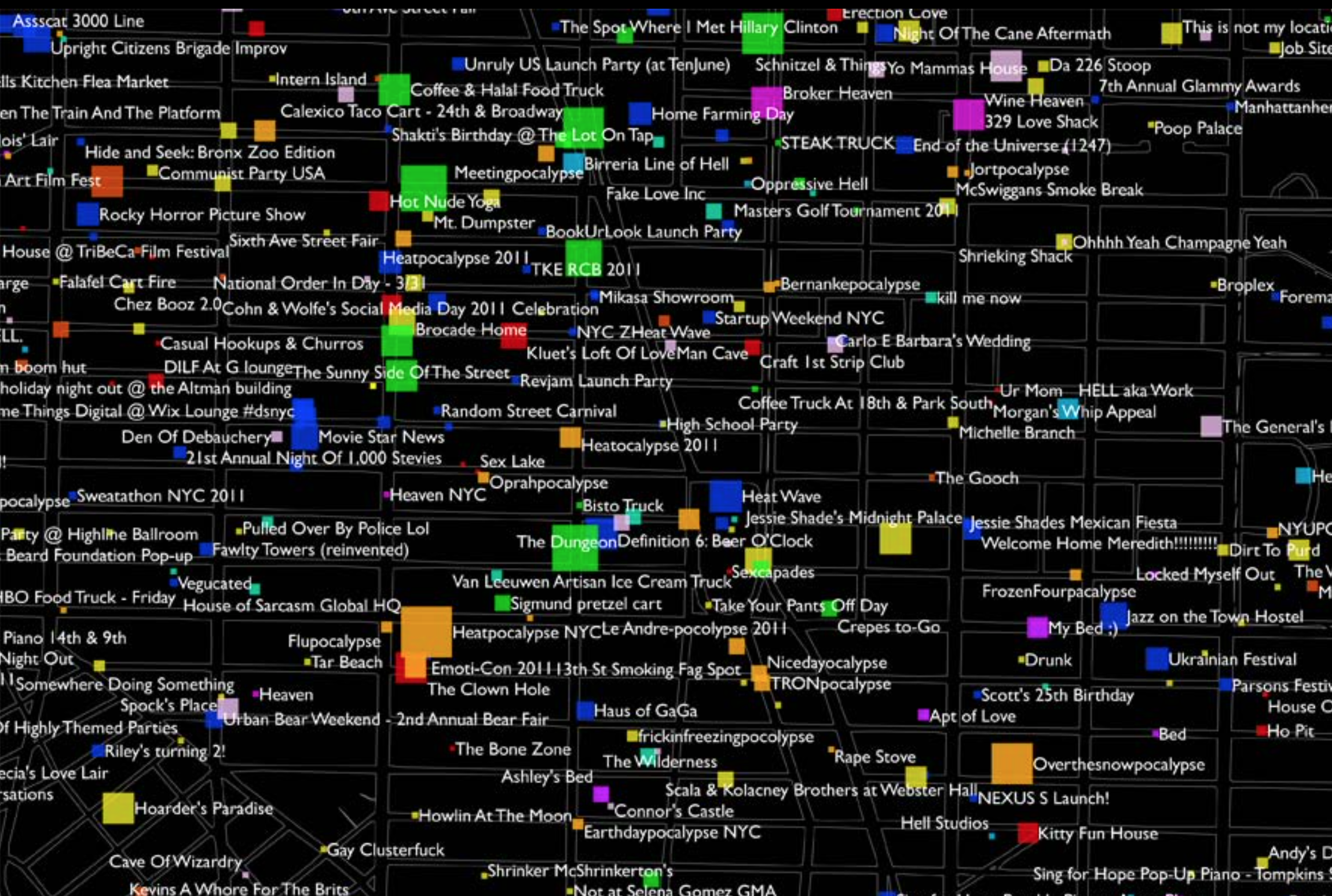
Process
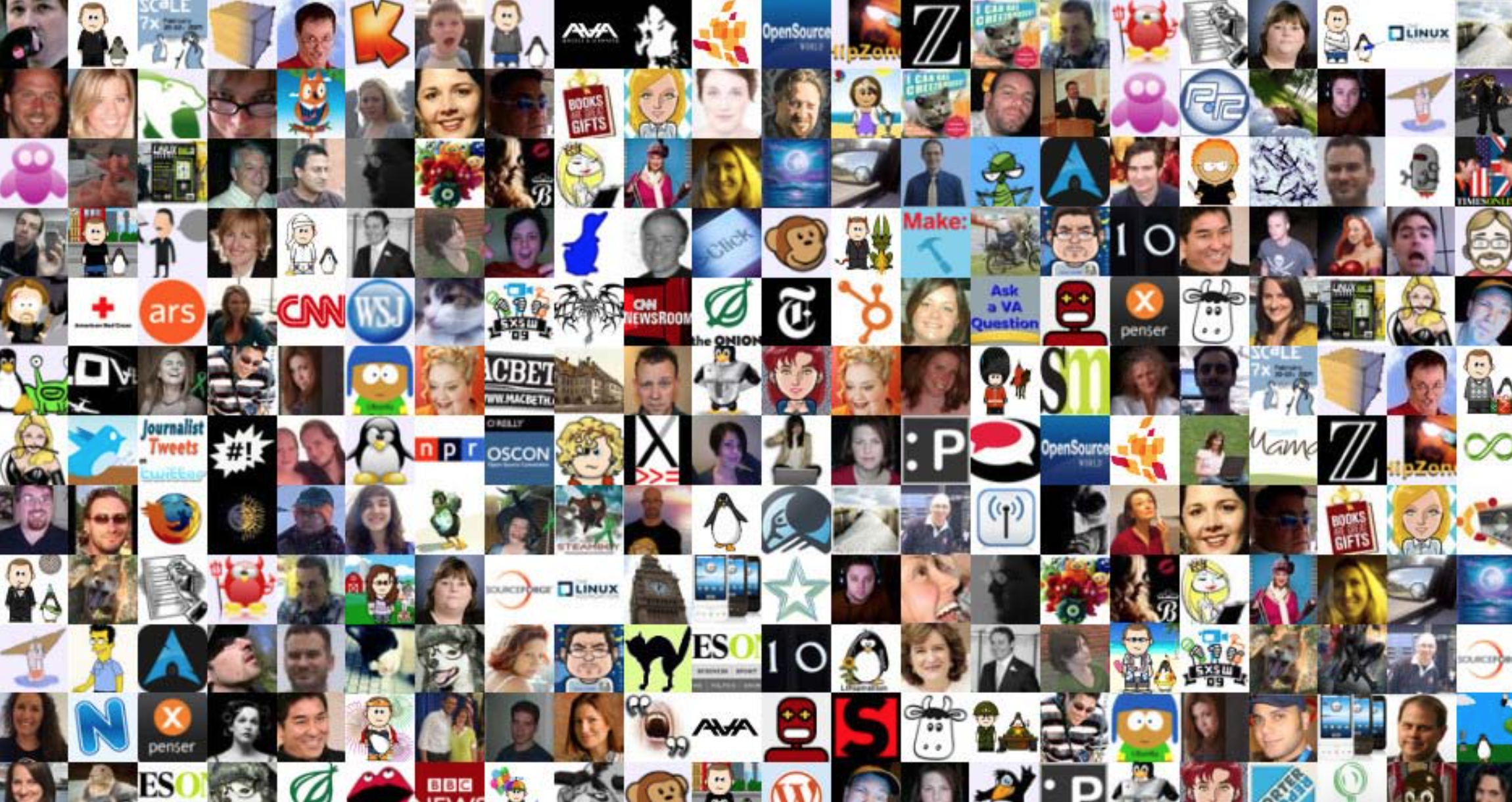 Sites such as Foursquare and Facebook allow us to spatially mark our explorations in the city, creating rich databases of our interactions.
Sites such as Foursquare and Facebook allow us to spatially mark our explorations in the city, creating rich databases of our interactions.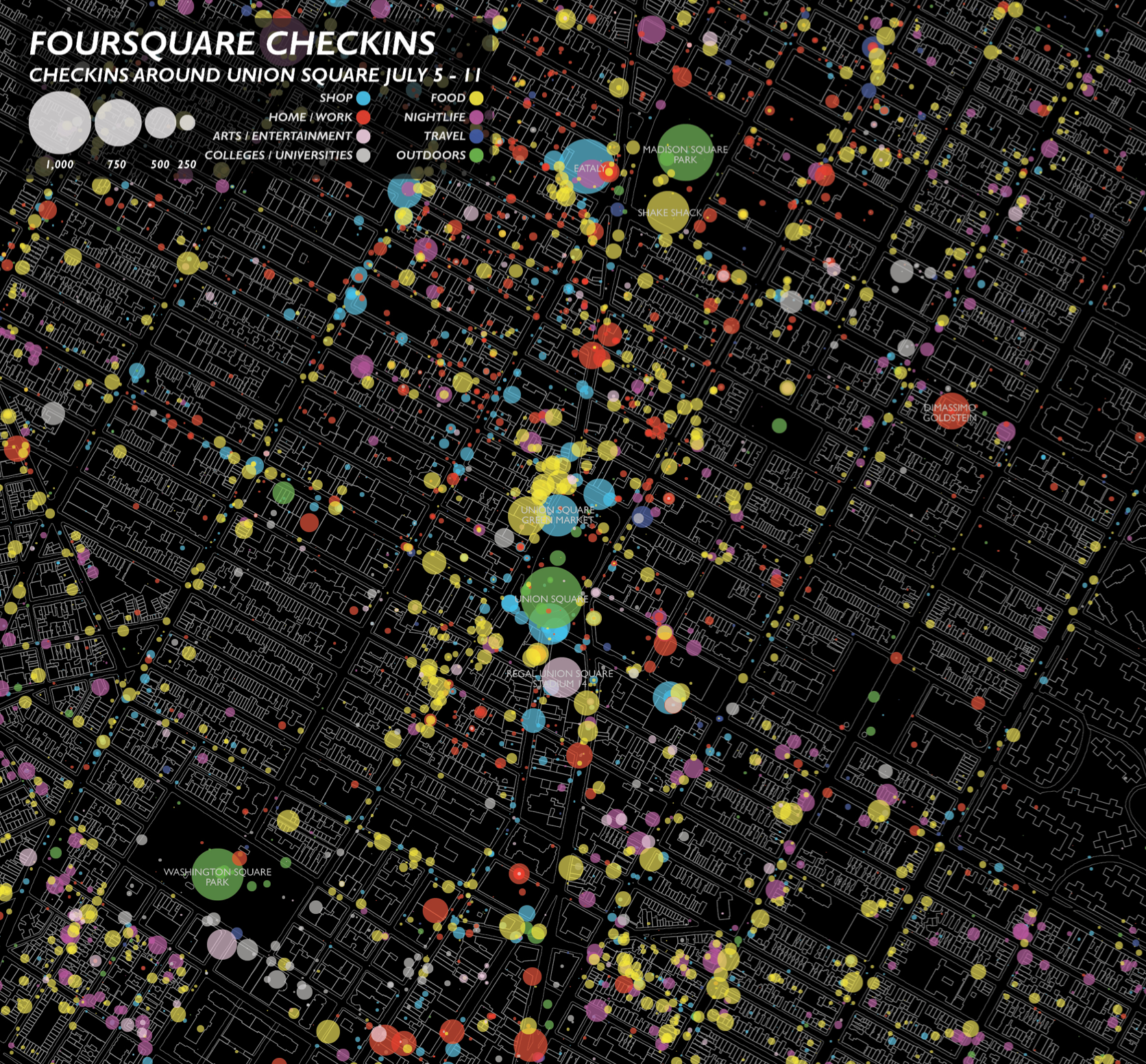 The results of the data mining exercise made it possible to create land use maps.
The results of the data mining exercise made it possible to create land use maps.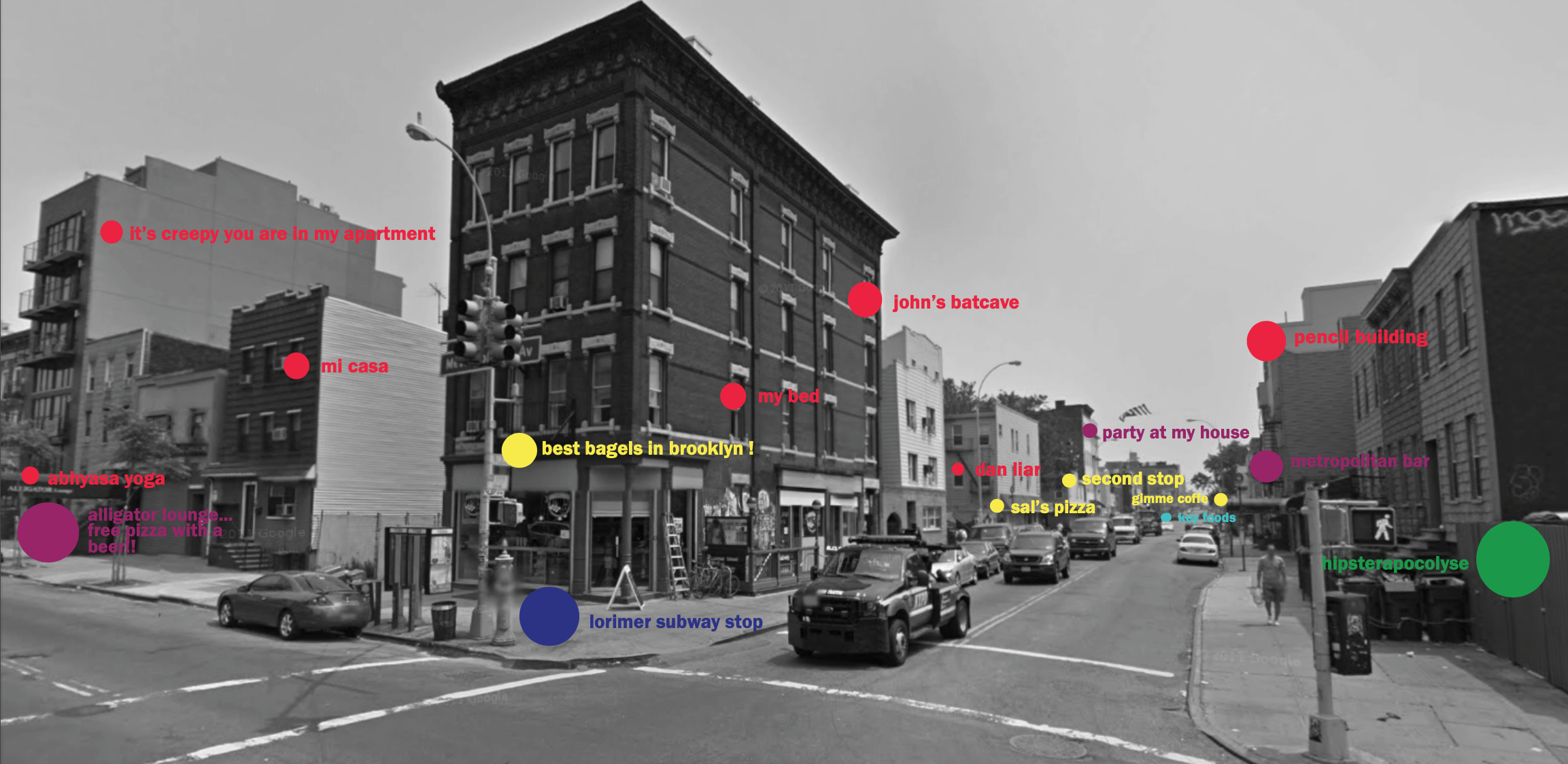 Users of Foursquare added their own places everything from “John’s batcave” to “it’s creepy you are in my apartment” as distinct location.
Users of Foursquare added their own places everything from “John’s batcave” to “it’s creepy you are in my apartment” as distinct location.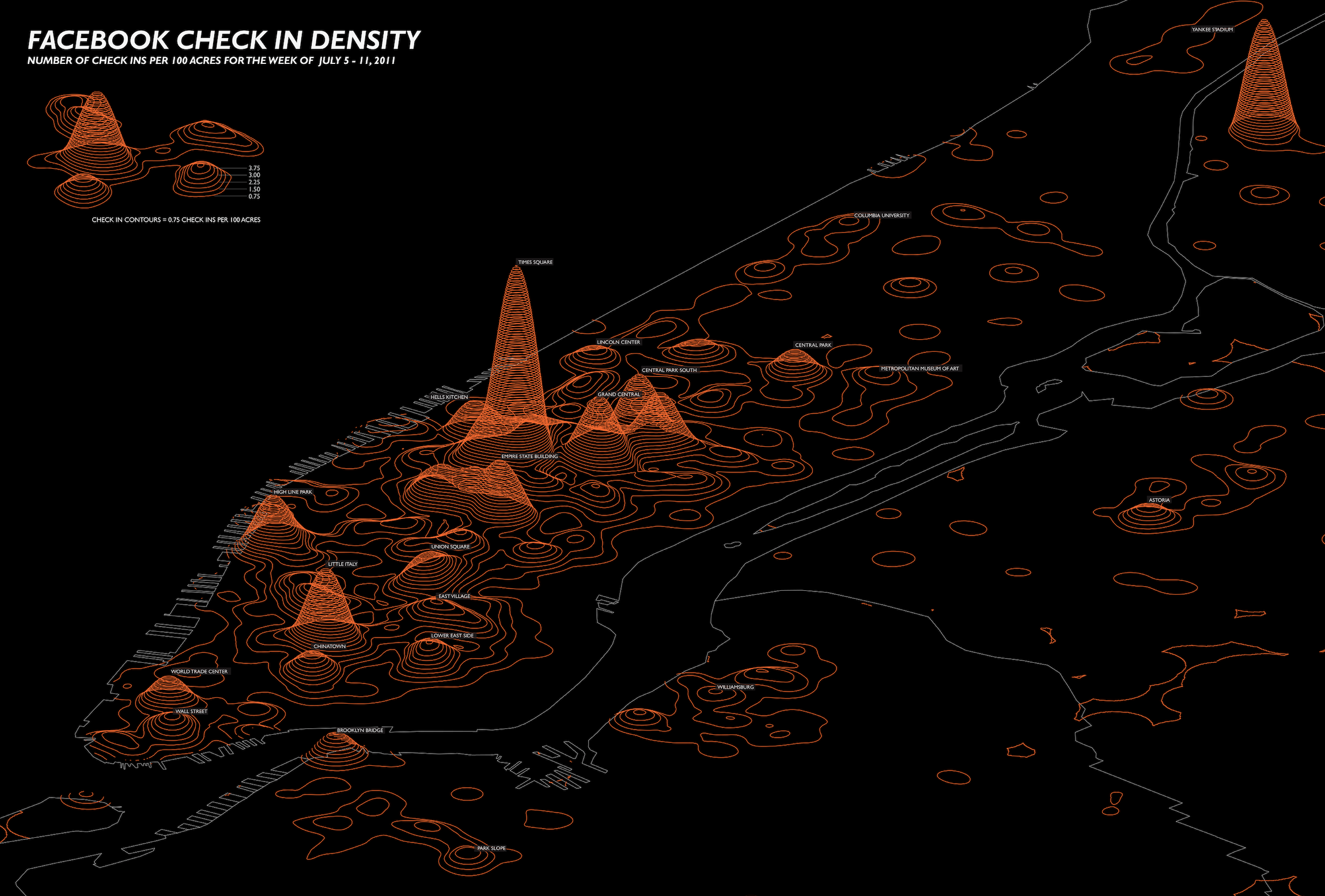 Foursquare and Facebook check-in data was converted into check-in density maps showing the differences between these two social media outlets. Extuded topography highlights that users of Facebook tend to check into tourist locations - Times Square, Little Italy, and Chinatown. While Foursquare users check-in to both tourist location and mundane.
Foursquare and Facebook check-in data was converted into check-in density maps showing the differences between these two social media outlets. Extuded topography highlights that users of Facebook tend to check into tourist locations - Times Square, Little Italy, and Chinatown. While Foursquare users check-in to both tourist location and mundane.


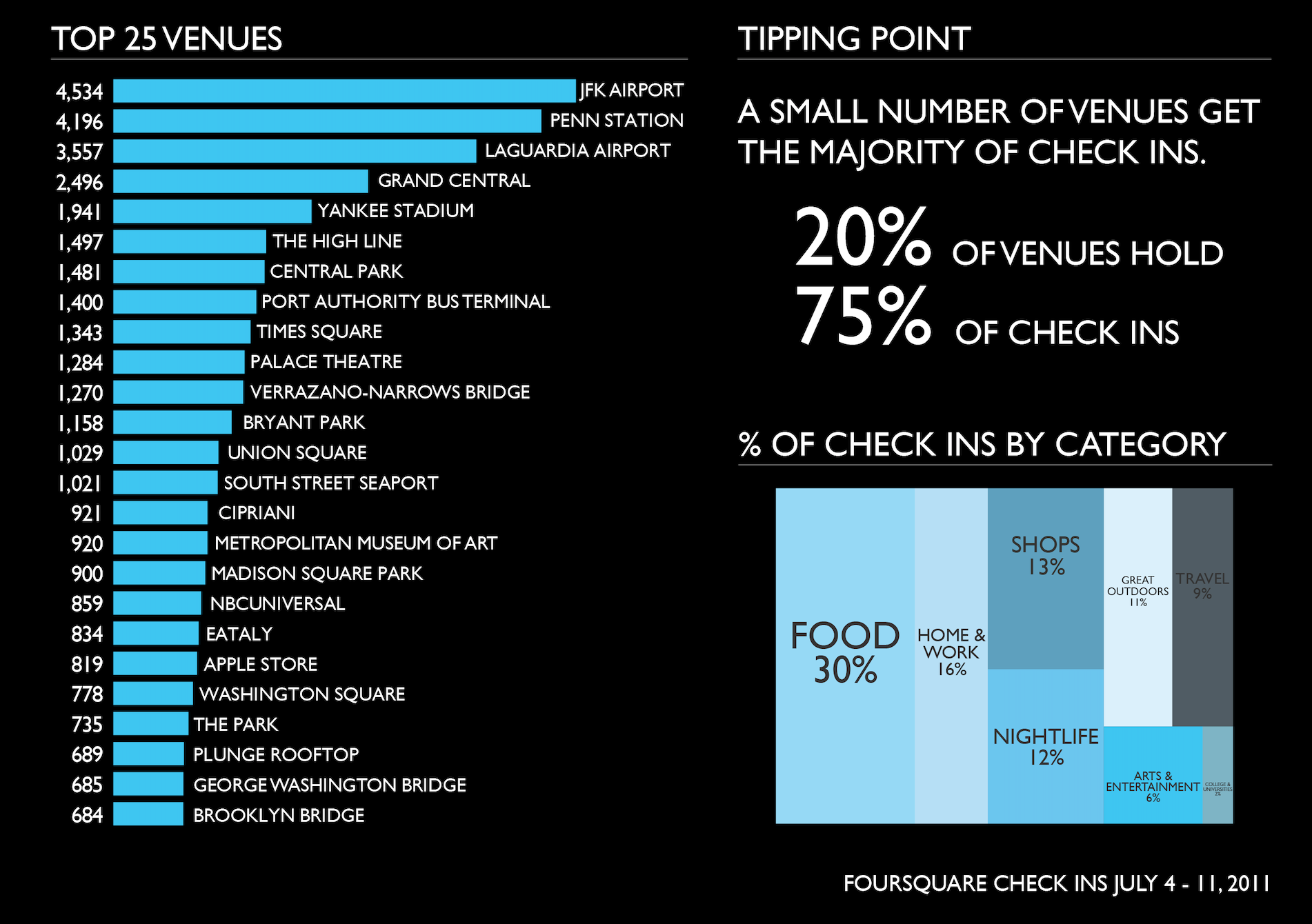 Detailed analysis of the Foursquare and Facebook data showed popular venue across the city. We also noticed that the Applications Programming Interface (API) in which we scrapped the data had a delay and check-in data updates, we noticed this often happen on one day rather than real-time. Users of both software checked into restaurants the most.
Detailed analysis of the Foursquare and Facebook data showed popular venue across the city. We also noticed that the Applications Programming Interface (API) in which we scrapped the data had a delay and check-in data updates, we noticed this often happen on one day rather than real-time. Users of both software checked into restaurants the most.Analysis
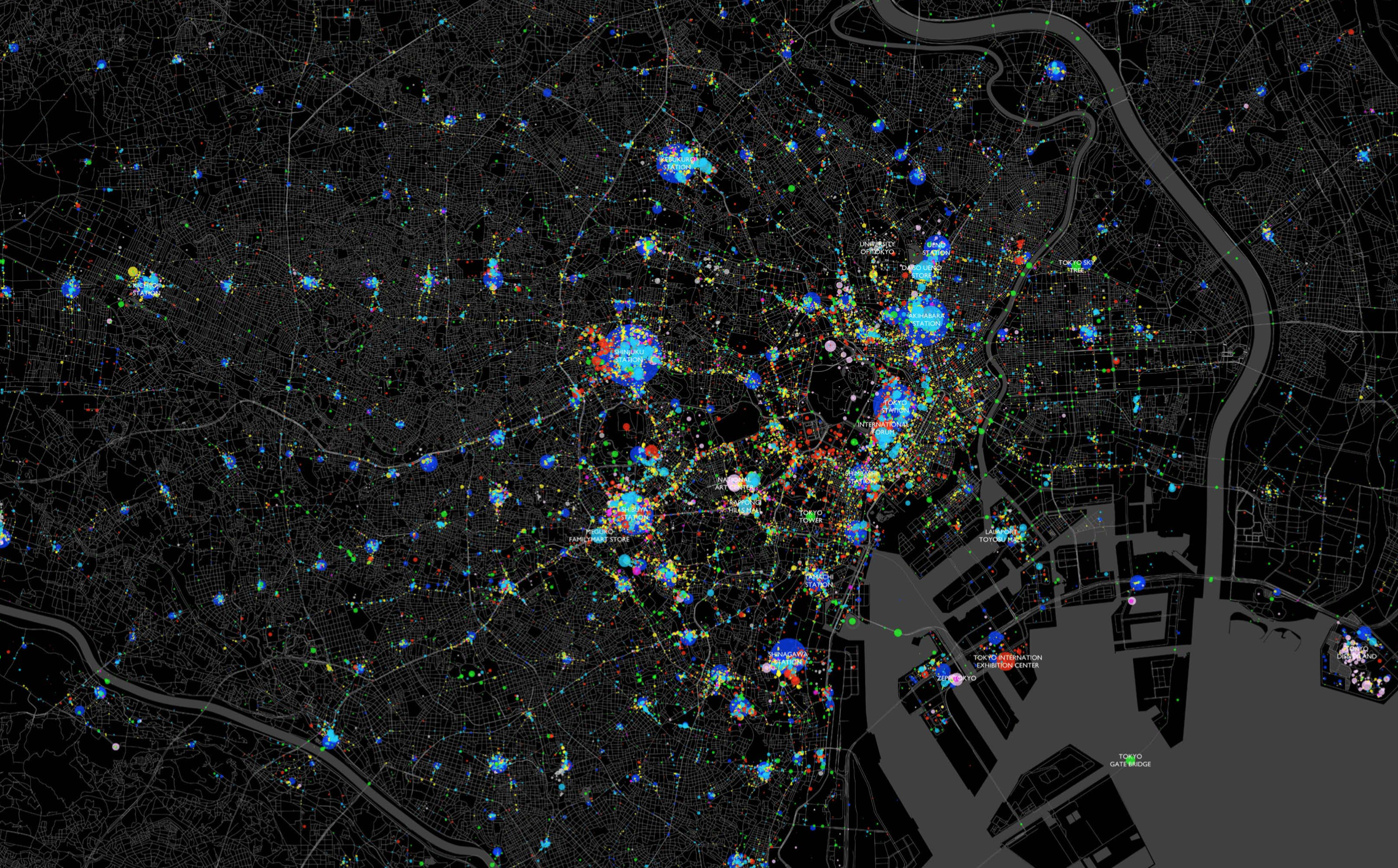
In Tokyo, the Foursquare Data highlighted transit nodes - seen in blue above.

In Moscow, Foursquare shows how mega malls have been built across they city, seen in light blue above.

In Moscow, Foursquare shows how mega malls have been built across they city, in light blue above.
-
We Are Here Now: Beijing
The latest iteration of We Are Here Now was presented as part of "Get it Louder", an annual arts festival in Beijing that showcases the work of Chinese artists, architects and designers. This interactive exhibit mapped Jiepang check-ins, the Chinese equivalent of Foursquare.
 Get it Louder, Beijing, China, 2012
Get it Louder, Beijing, China, 2012

Publication
Williams, Sarah, “Here
Now! Social Media and the Psychological City,” Map in: Atlas of Design, Edited by Tim Wallace and Daniel Huffman, North American Cartographic Information Society, 2012.
Williams, Sarah, “Here
Now! Social Media and
the Psychological City,” in Inscribing a Square - Urban Data as Public Space, Edited by Katja Schechtner and Dietmar Offenhuber, Springer, 2012.
Press
︎︎︎ “We are Here Now.” German Version of Geo International, 2012.
︎︎︎ “An Argument for Beauty.”
Huffington Post, 2012.
︎︎︎ “Moving Map Showing One Week of NYC Foursquare Check-Ins.” NYC Digital, 2012.
︎︎︎ “Interactive Foursquare Check- In Map of NYC.” NYC Digital, 2012.
︎︎︎ “Density of Foursquare Check- Ins in New York City.” NYC Digital, January 2012.
Exhibitions
We are Here Now! Get it Louder, Beijing, China, 2012.
Here Now! Social Media and the Psychological City Digitas Advertising Firm, New York, NY, 2012.
Here Now! Social Media and the Psychological City STUDIO-X Gallery and
Avery Hall Gallery Columbia University, Graduate School of Architecture Planning and Preservation, New York, NY, 2012.
Williams, Sarah, “Here
Now! Social Media and the Psychological City,” Map in: Atlas of Design, Edited by Tim Wallace and Daniel Huffman, North American Cartographic Information Society, 2012.
Williams, Sarah, “Here
Now! Social Media and
the Psychological City,” in Inscribing a Square - Urban Data as Public Space, Edited by Katja Schechtner and Dietmar Offenhuber, Springer, 2012.
Press
︎︎︎ “We are Here Now.” German Version of Geo International, 2012.
︎︎︎ “An Argument for Beauty.”
Huffington Post, 2012.
︎︎︎ “Moving Map Showing One Week of NYC Foursquare Check-Ins.” NYC Digital, 2012.
︎︎︎ “Interactive Foursquare Check- In Map of NYC.” NYC Digital, 2012.
︎︎︎ “Density of Foursquare Check- Ins in New York City.” NYC Digital, January 2012.
Exhibitions
We are Here Now! Get it Louder, Beijing, China, 2012.
Here Now! Social Media and the Psychological City Digitas Advertising Firm, New York, NY, 2012.
Here Now! Social Media and the Psychological City STUDIO-X Gallery and
Avery Hall Gallery Columbia University, Graduate School of Architecture Planning and Preservation, New York, NY, 2012.